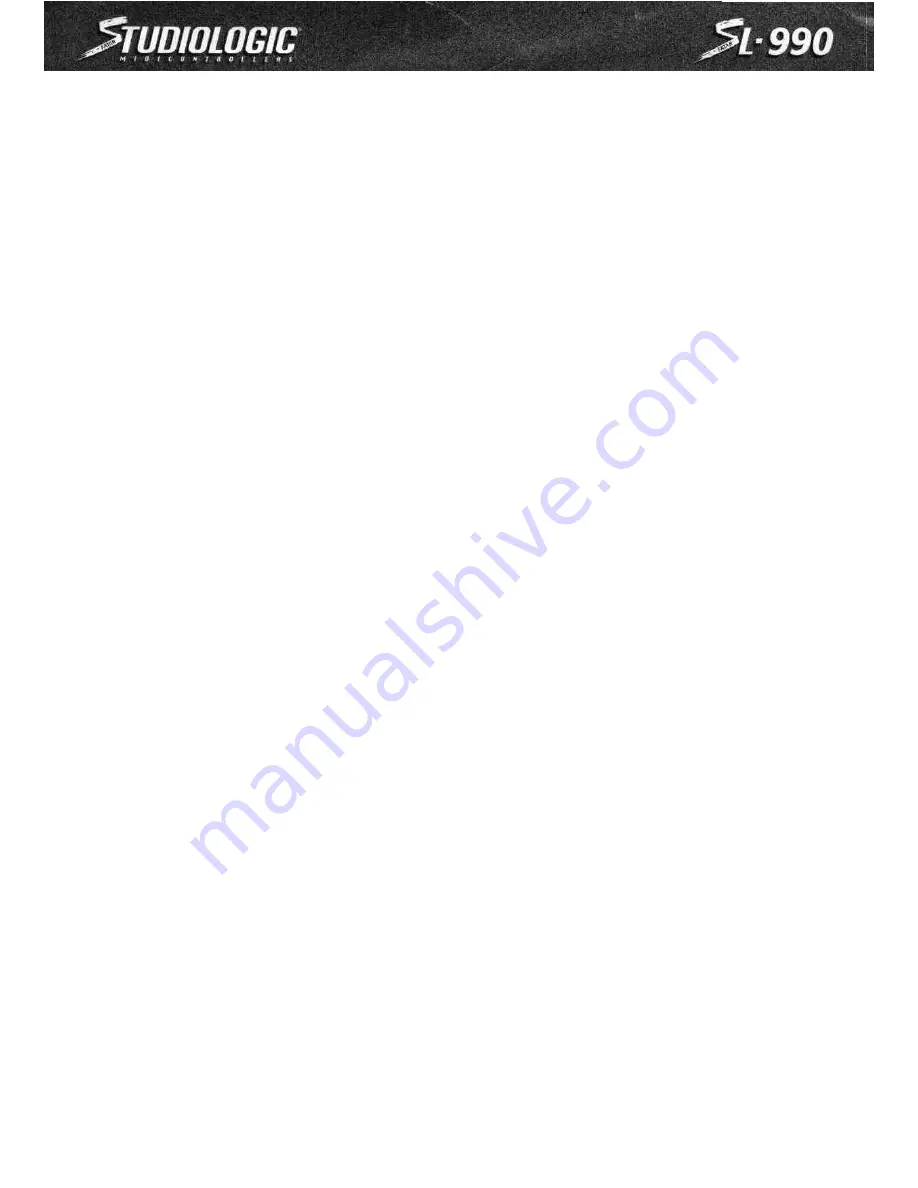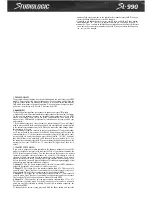
1. PROGRAM CHANGE
The program change function is used select which patch you want from your MIDI
module. You can select the program change number by pressing and holding the
Program Change button and entering the number, in the central octave/number entry
field which corresponds to the patch you desire. When you release the program chan-
ge button, the message will be sent. Values run from 1-128.
2. BANK SELECT
The Bank Select function allows you to change the patch bank of your MIDI module
or keyboard. Due to different manufacturers approaches to this function, the format
for entering this parameter depends on the model and manufacturer of your MIDI
module or keyboard. Please refer to the MIDI Implementation Chart found in the
manual of your MIDI module or keyboard for information on the format which your
unit requires.
1. If your module requires a value sent only on control channel 32, you will simply
need to press and hold the Bank Change button, and enter the bank number desired
in the central octave/number entry field. When you release the bank change button,
the message will be sent.
2. If your module requires values to be sent on control channel 32 and control chan-
nel 0, you will need to press and hold the Bank Change button, and first enter the
value needed for cc; 32 in the central octave/number entry field. Then, while conti-
nuing to hold the bank select button, press the key labeled "-/H" (Bb) (indicates
that what follows is the "higher byte") and then enter the value needed for cc; 0 in
the central octave/number entry field. When you release the bank change button, the
messages will be sent. EXAMPLE; (cc; 32 value) then-/H (higher byte) then (cc; 0
value)
3. VELOCITY CURVE (SHAPE)
If you wish to adapt your master controller to the dynamic response of your MIDI
module or keyboard, or simply wish to adjust the "feel" of your master controller, the
SL-990 offers four types of curves. You can choose to use these curves in a positive
(normal) or negative (inverted) manner for a total of eight choices in velocity
response. Negative curves can be used to produce inverted responses. If you were to
play an inverted curve softly, you would get a loud response, and conversely, if you
were to play loudly, you would get a soft response. This can be surprisingly useful
and deserves some experimentation on your part.
1. Shape N*1 -This is a linear response and is the norm for most MIDI modules or
keyboards. Essentially, what you put in is what you get out.
2. Shape N*2 -This shape has a less sensitive response than N*1. This is useful if
you play with a "heavy" touch or if your module or a particular patch is very sensi-
tive to velocity. Think of this as compression, but done through MIDI.
3. Shape N*3 -This shape has a more sensitive response than N*1. This is useful if
you play with a "light" touch or if your module or a particular patch is not as sensi-
tive to velocity. Think of this as expansion, but done through MIDI.
4. Shape N*4 -This shape has an even more sensitive response than N*1 or N*3.
This is useful if you play with a "very light" touch or if your module or a particular
patch has very little sensitivity to velocity. Think of this as extreme expansion, but
done through MIDI.
To change velocity curves, simply press and hold the Shape button, and enter the
number of the curve yon want, in the central octave/number entry field. When you
release the Shape button, the curve will be changed.
If you wish to use negative velocity curves, simply press and hold the Shape button,
and first press the "-/H" (Bb) key to indicate that you are choosing a negative (-)
curve. Then, continue to hold the Shape button and enter the number of the curve
you want in the central octave/number entry field. When you release the Shape but-
ton, curve will be changed.




















